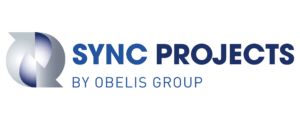Since of 26th of May 2021, the Medical Device Regulation (MDR) came into effect.
The IVDR (In Vitro Diagnostic medical devices Regulation) will repeal the existing IVD Directive (98/79/EC)
on 26th of May 2022.
This Regulation is significant, and leads to a new approach in the European regulatory framework - the very fact that the directive is turned into a regulation makes it significant in such a way that it will no longer be possible to add further requirements in each country beyond the directive since the regulation applies to the entire European Union which is hierarchically above the individual countries. The new regulation began to take form in 2012, was finally approved in May 2017 (it took five years to formulate and approve it!), and three years were given before it would officially come into effect.
May 2020 was the scheduled date, but due to the global COVID-19 crisis, it was postponed by a year and set for May 2021. A grace period of five years was set before the full enforcement of the new regulation; however, we are currently awaiting the publication of the EU report following the postponement, and it seems organizations will have to comply with MDR as soon as the three-year period elapses.
What exactly are the significant changes between the existing directive and the new regulation?
Let's start with the fact that today there are three different directives that regulate medical devices in Europe, which has led to certain countries introducing additional requirements for the placing of Medical Devices in their territories (such as national registrations). The regulation is, by definition, applied equally across the European Union, and no longer allows for individual interpretation in each country.
Apart from that, the regulation introduces the following new rules and requirements:
-
High-risk products are required to face much stricter quality control and audit.
-
A new system for approving and supervising Notified Bodies.
-
Clear procedures for the certification process (frequency of each test, audit plan, clear content).
-
Inclusion of products without a medical purpose.
-
New classification rules
-
Transparency of information to the general public.
-
Evaluation of up-to-date clinical information (for all types of a medical device - also Class I).
-
NEW obligations on importers and distributors located in Europe
-
Designation of the person responsible for the regulation in the country of manufacture (PRRC).
-
Collaborations between health authorities.
 Medical Device
Medical Device Cosmetics
Cosmetics ISO Standards
ISO Standards IL Ministry of Defense
IL Ministry of Defense


